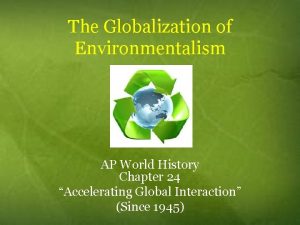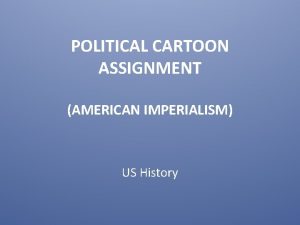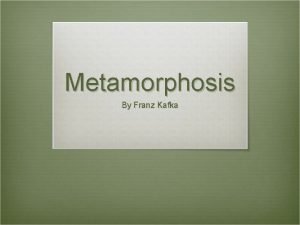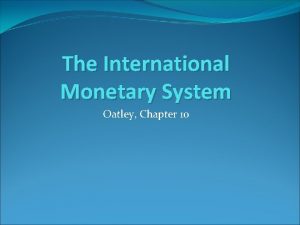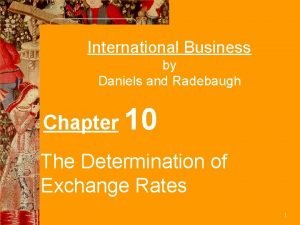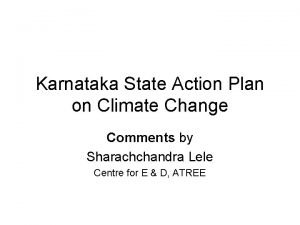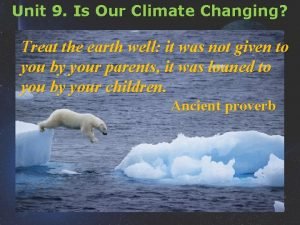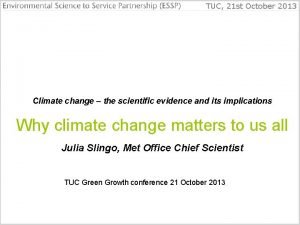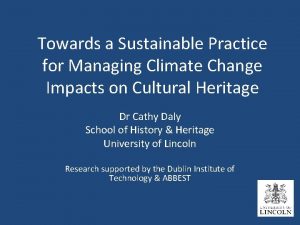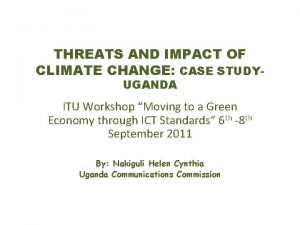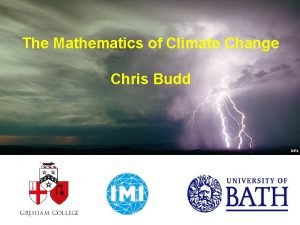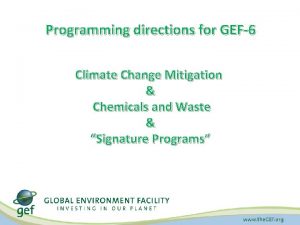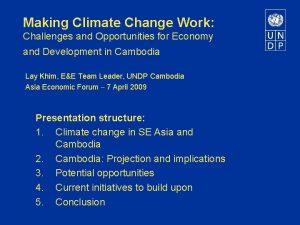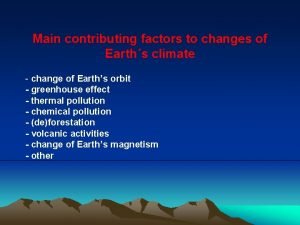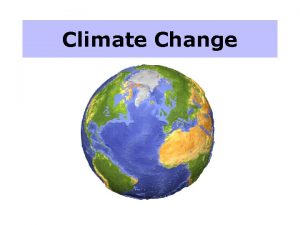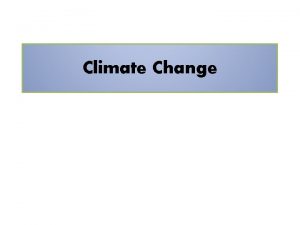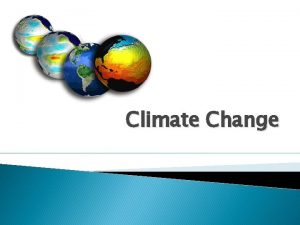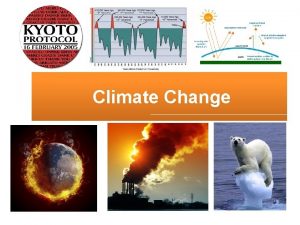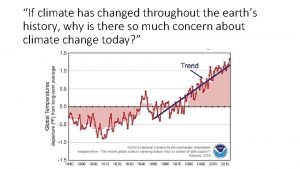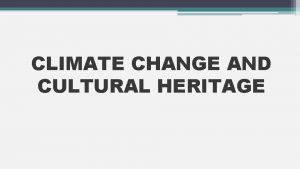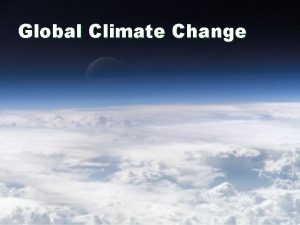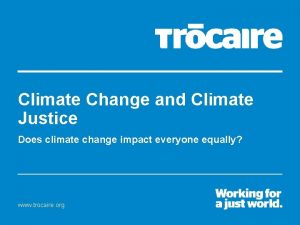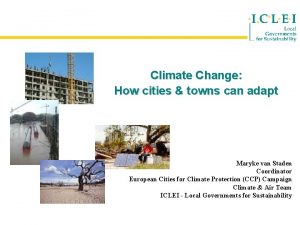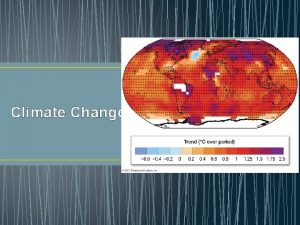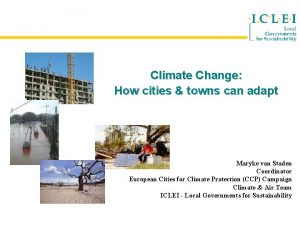Climate Change History n n Climate has changed






















- Slides: 22

Climate Change

History n n Climate has changed and shifted for millions of years Earth goes through warming and cooling phases How do they know? ? Data from ice cores, radioisotopes in rocks and fossils, pollen, tree rings

n n Gathered from drilling deep holes in glaciers. Sites such as Antarctica and Greenland. Shows a year by year record of trees growth. Can tell weather patterns.

Greenhouse gases n n Include CO 2, Methane, Nitrous oxide, CFC’s, and HFC’s (Hydrofluorocarbons) Fact – U. S. has 4. 6% of the worlds pop. But produces ¼ of world CO 2 emissions

Reasons that back Global Warming 1. 2. 3. 4. 5. 6. The 20 th century was the hottest in 1000 yrs Since 1861, temp. of Troposphere has risen. 6 Co 10 warmest years on record have occurred since 1990 Glacial melting is increasing Melting of permafrost in Alaska and Arctic Sea levels have rose 4 -8 inches in the last century

Factors effecting global climate 1. n n n Oceans Currents act like a conveyor belt. They store CO 2 and heat and is propelled by the wind. An increase or decrease in temp. will lead to a change in the currents direction. Disruption or slowing of the belt would cause drastic changes such as floods, drought, severe storms, and heat.


2. n n n Outdoor pollutants Aerosols Produced by volcanoes and human activity Can warm or cool the air depending on their size and reflectivity


3. High levels of CO 2 n This would actually increase plant growth n Which would decrease CO 2 levels n But all of the CO 2 would be returned to the atmosphere when it dies 4. Increased Methane emissions n A large release would come from permafrost melting n This would warm the earth, which would then release more gas and so on.


Options Three schools of thought 1. Wait and see strategy n U. S. currently holds this policy 2. Act now to reduce the risks from climate change 3. Act now as part of a no-regrets strategy n

Prevention vs Cleanup n n n n Cut fossil fuels use Shift from coal to natural gas Shift to renewable energy Give this technology to developing countries Reduce deforestation Limit urban sprawl Slow population growth n n n Scrub CO 2 from emissions Store CO 2 by planting trees Bury CO 2 underground or deep in the oceans Repair leaky pipelines and facilities Use animal feed that reduces emissions by belching cows


Kyoto Protocol n n n December 1997, 161 nations met in Kyoto Japan to negotiate a treaty to help slow global warming Requires 39 developed countries to reduce greenhouse emissions by 2012 Why the 39? – they are the major polluters

n n n This did not require developing countries to lower their emissions until a later date U. S. withdrew from participating in the protocol in 2001 Why? China and India were not under the regulations Also, it was felt that it was too expensive


Why is this difficult to deal with? 1. The problem has many complex causes. 2. The problem is global. 3. The problem is a long term issue 4. The harmful and beneficial impacts of climate change are not spread equally. 5. We cannot stop climate change, only slow and adapt to it. 6. Phasing out fossil fuels may disrupt economies and lifestyles.

Good Karma? n n Great Britain -reduced its emissions to its 1990 levels. Mainly by improving energy efficiency in homes and industry China has reduced its CO 2 emissions by 17% Conversely, the United States CO 2 emissions rose by 14%


Seed Vault n n n Svalbard Global Seed Vault, also known as the doomsday Vault Dug into a mountain side in the Norway Will be used to hold large quantities of seeds from plants throughout the world Most importantly, seeds that make up most of the agricultural industry. No matter what, the seeds will be frozen

 Climate change 2014 mitigation of climate change
Climate change 2014 mitigation of climate change Globalization definition ap world history
Globalization definition ap world history Cartoon
Cartoon Setting of metamorphosis
Setting of metamorphosis Character foils in macbeth
Character foils in macbeth How has technology changed sports
How has technology changed sports Dave grolsh
Dave grolsh Has the exchange rate changed chapter 10
Has the exchange rate changed chapter 10 Has the exchange rate changed chapter 10
Has the exchange rate changed chapter 10 Climate change paragraph
Climate change paragraph Karnataka state action plan on climate change
Karnataka state action plan on climate change Brainpop ocean currents
Brainpop ocean currents Climate change meaning and definition
Climate change meaning and definition Chapter 13 atmosphere and climate change section 1
Chapter 13 atmosphere and climate change section 1 Unit 9 climate change
Unit 9 climate change Conclusion of climate change
Conclusion of climate change Conclusion of climate change
Conclusion of climate change Conclusion of climate change
Conclusion of climate change Mathematics of climate change
Mathematics of climate change Climate change mitigation
Climate change mitigation 414 climate change
414 climate change Conclusion of climate change
Conclusion of climate change Factors of climate change
Factors of climate change

